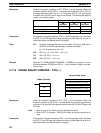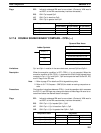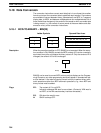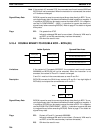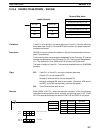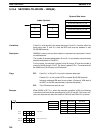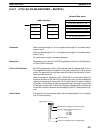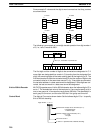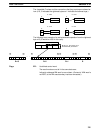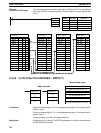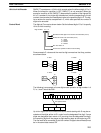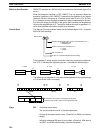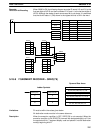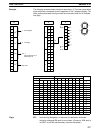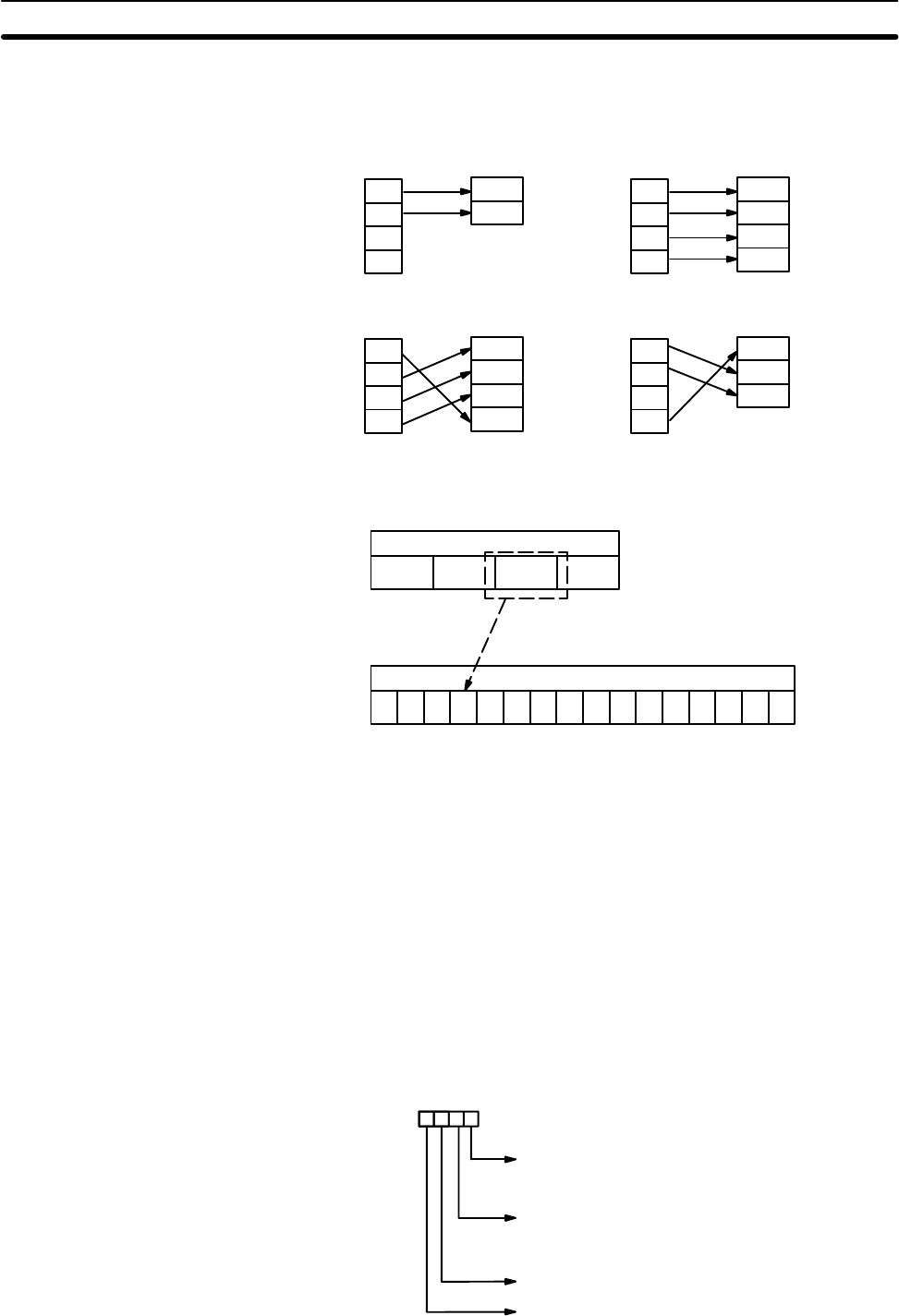
210
Some example C values and the digit-to-word conversions that they produce
are shown below.
0
1
2
3
R
R + 1
R
R + 1
R + 2
0
1
2
3
0
1
2
3
0
1
2
3
R
R + 1
R + 2
R + 3
R
R + 1
R + 2
R + 3
S
C: 0031 C: 0023
C: 0030C: 0010
S
S
S
The following is an example of a one-digit decode operation from digit number 1
of S, i.e., here C would be 0001.
Source word
First result word
C
0001000000000000
Bit C (i.e., bit number 12) turned ON.
The first digit and the number of digits to be converted are designated in C. If
more digits are designated than remain in S (counting from the designated first
digit), the remaining digits will be taken starting back at the beginning of S. The
final word required to store the converted result (R plus the number of digits to be
converted) must be in the same data area as R, e.g., if two digits are converted,
the last word address in a data area cannot be designated; if three digits are con-
verted, the last two words in a data area cannot be designated.
8-bit to 256-bit Decoder MLPX(76) operates as an 8-bit to 256-bit decoder when the leftmost digit of C is
set to 1. The hexadecimal value of the two bytes in S are used to specify a bit in
one or two groups of 16 consecutive result words (256 bits). The specified bit in
each group is turned on, and the other 255 bits in the group are turned off.
Control Word The digits of C are set as shown below. Set the leftmost digit of C to 1 to specify
8-bit to 256-bit decoding.
Specifies the first byte to be converted (0 or 1).
0: Rightmost byte
1: Leftmost byte
Number of bytes to be converted (0 or 1).
0: 1 byte
1: 2 bytes
Not used. Set to 0.
A value of 1 specifies 8-bit to 256-bit decoding.
Digit number: 3210
Data Conversion Section 5-18



